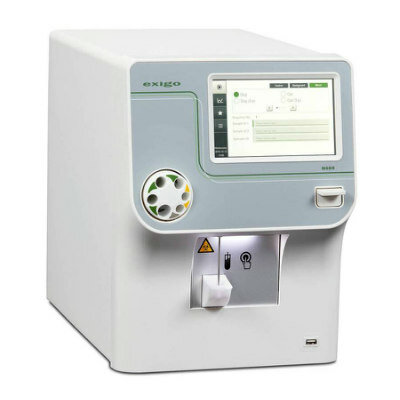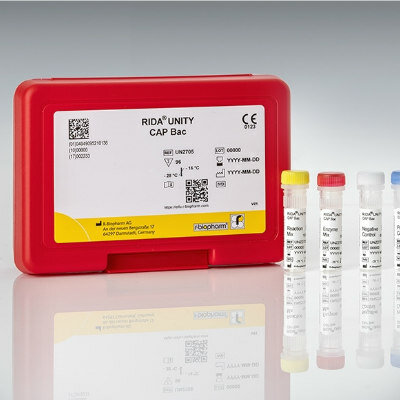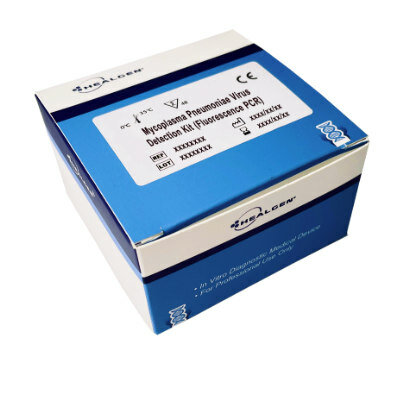Digital Spatial Profiling Augments Pathology in Diagnosing Pulmonary Fibrosis
|
By LabMedica International staff writers Posted on 27 Jul 2022 |
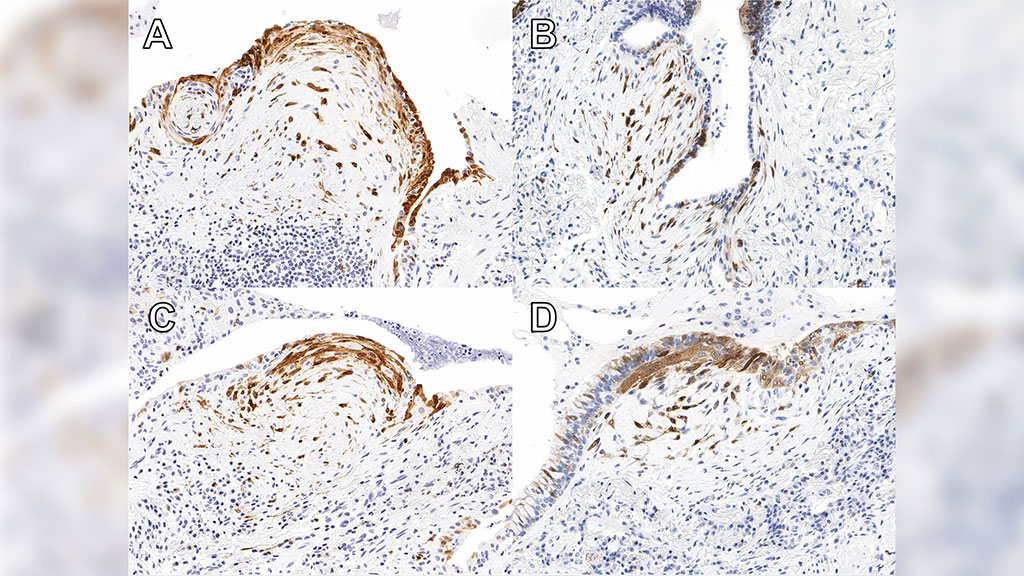
A team of Canadian respiratory disease researchers reported that the p16 (cyclin-dependent kinase inhibitor) protein could be used to diagnose patients with the serious lung disease idiopathic pulmonary fibrosis.
Idiopathic pulmonary fibrosis (IPF) is one of the most serious and common types of fibrotic interstitial lung diseases (ILDs), occurring most often in patients 60 years of age and older with an average survival time of three to five years. It is the number one reason for lung transplants. IPF is associated with increased expression of cyclin-dependent kinase inhibitors such as p16 and p21, and subsequent induction of cell cycle arrest, cellular senescence, and pro-fibrotic gene expression.
Investigators at Lawson Health Research Institute (London, ON, Canada) conducted a study that sought to link p16-expression with a diagnosis of IPF or other fibrotic interstitial lung diseases.
For this study, they first used surgical lung biopsy to identify 86 cases of fibrosing ILD. Immunohistochemistry for p16 was performed on sections with the most active fibrosis. Foci that were p16-positive (loose collection of p16-positive fibroblasts with overlying p16-positive epithelium) were identified on digital slides and quantified. Twenty-four areas including senescent foci, fibrotic, and normal areas were characterized using in situ RNA expression analysis with digital spatial profiling (DSP) in selected cases.
In this study, digital spatial RNA high-resolution profiling with the GeoMX platform was used for the first time in fibrotic ILD to explore transcriptional differences in fibroblastic foci versus fibrotic and normal-looking areas in IPF cases.
The NanoString Technologies (Seattle, WA, USA) GeoMX Digital Spatial Profiling (DSP) method provided highly multiplex spatial profiling of RNAs on formalin-fixed, paraffin-embedded (FFPE) samples. The DSP platform quantified the abundance of RNA by counting unique indexing oligonucleotides assigned to each target of interest. Whole tissue sections, FFPE, or fresh frozen, were imaged and stained for RNA or protein. Investigators then precisely selected which tissue compartments or cell types to profile based on the biology, and subsequently count expression levels.
Results revealed that the presence of p16-positive foci was specific for the diagnosis of IPF, where 50% of cases expressed some level of p16 and 26% were p16-high. There was no relationship between radiographic pattern and p16 expression. However, there was increased expression of cyclin-dependent kinase inhibitors, collagens, and matrix remodeling genes within p16-positive foci, and cases with high p16 expression had shorter lung transplant-free survival. The DSP approach demonstrated that fibroblastic foci exhibited transcriptional features clearly distinct from that of normal-looking and even fibrotic areas.
Senior author Dr. Marco Mura, associate scientist at Lawson Health Research Institute, said, "We developed a method that is actually quite inexpensive to increase the diagnostic accuracy of the biopsy and help to avoid unclassifiable cases. The method has a prognostic value, so it helps predict survival of these patients at the time of biopsy. We have no tests that we can apply to the (lung) biopsy other than the pathologist looking at it and saying “OK, this biopsy shows this pattern”. There were absolutely zero additional biomarker tests to reinforce, validate, or support the diagnosis. So, this will be the first time that we implement such test biomarkers in clinical practice."
The study was published in the June 7, 2022, online edition of the journal Respiratory Research.
Related Links:
Lawson Health Research Institute
NanoString Technologies
Latest Pathology News
- Novel UV and Machine Learning-Aided Method Detects Microbial Contamination in Cell Cultures
- New Error-Corrected Method to Help Detect Cancer from Blood Samples Alone
- "Metal Detector" Algorithm Hunts Down Vulnerable Tumors
- Novel Technique Uses ‘Sugar’ Signatures to Identify and Classify Pancreatic Cancer Cell Subtypes
- Advanced Imaging Reveals Mechanisms Causing Autoimmune Disease
- AI Model Effectively Predicts Patient Outcomes in Common Lung Cancer Type
- AI Model Predicts Patient Response to Bladder Cancer Treatment
- New Laser-Based Method to Accelerate Cancer Diagnosis
- New AI Model Predicts Gene Variants’ Effects on Specific Diseases
- Powerful AI Tool Diagnoses Coeliac Disease from Biopsy Images with Over 97% Accuracy
- Pre-Analytical Conditions Influence Cell-Free MicroRNA Stability in Blood Plasma Samples
- 3D Cell Culture System Could Revolutionize Cancer Diagnostics
- Painless Technique Measures Glucose Concentrations in Solution and Tissue Via Sound Waves
- Skin-Based Test to Improve Diagnosis of Rare, Debilitating Neurodegenerative Disease
- Serum Uromodulin Could Indicate Acute Kidney Injury in COVID-19 Patients
- AI Model Reveals True Biological Age From Five Drops of Blood
Channels
Clinical Chemistry
view channel
‘Brilliantly Luminous’ Nanoscale Chemical Tool to Improve Disease Detection
Thousands of commercially available glowing molecules known as fluorophores are commonly used in medical imaging, disease detection, biomarker tagging, and chemical analysis. They are also integral in... Read more
Low-Cost Portable Screening Test to Transform Kidney Disease Detection
Millions of individuals suffer from kidney disease, which often remains undiagnosed until it has reached a critical stage. This silent epidemic not only diminishes the quality of life for those affected... Read more
New Method Uses Pulsed Infrared Light to Find Cancer's 'Fingerprints' In Blood Plasma
Cancer diagnoses have traditionally relied on invasive or time-consuming procedures like tissue biopsies. Now, new research published in ACS Central Science introduces a method that utilizes pulsed infrared... Read moreHematology
view channel
New Scoring System Predicts Risk of Developing Cancer from Common Blood Disorder
Clonal cytopenia of undetermined significance (CCUS) is a blood disorder commonly found in older adults, characterized by mutations in blood cells and a low blood count, but without any obvious cause or... Read more
Non-Invasive Prenatal Test for Fetal RhD Status Demonstrates 100% Accuracy
In the United States, approximately 15% of pregnant individuals are RhD-negative. However, in about 40% of these cases, the fetus is also RhD-negative, making the administration of RhoGAM unnecessary.... Read moreImmunology
view channel
Stem Cell Test Predicts Treatment Outcome for Patients with Platinum-Resistant Ovarian Cancer
Epithelial ovarian cancer frequently responds to chemotherapy initially, but eventually, the tumor develops resistance to the therapy, leading to regrowth. This resistance is partially due to the activation... Read more
Machine Learning-Enabled Blood Test Predicts Immunotherapy Response in Lymphoma Patients
Chimeric antigen receptor (CAR) T-cell therapy has emerged as one of the most promising recent developments in the treatment of blood cancers. However, over half of non-Hodgkin lymphoma (NHL) patients... Read moreMicrobiology
view channel
Handheld Device Delivers Low-Cost TB Results in Less Than One Hour
Tuberculosis (TB) remains the deadliest infectious disease globally, affecting an estimated 10 million people annually. In 2021, about 4.2 million TB cases went undiagnosed or unreported, mainly due to... Read more
New AI-Based Method Improves Diagnosis of Drug-Resistant Infections
Drug-resistant infections, particularly those caused by deadly bacteria like tuberculosis and staphylococcus, are rapidly emerging as a global health emergency. These infections are more difficult to treat,... Read more
Breakthrough Diagnostic Technology Identifies Bacterial Infections with Almost 100% Accuracy within Three Hours
Rapid and precise identification of pathogenic microbes in patient samples is essential for the effective treatment of acute infectious diseases, such as sepsis. The fluorescence in situ hybridization... Read morePathology
view channel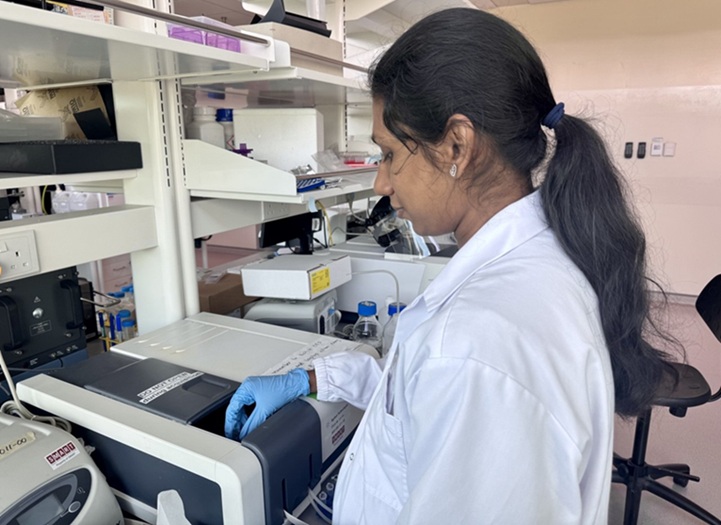
Novel UV and Machine Learning-Aided Method Detects Microbial Contamination in Cell Cultures
Cell therapy holds great potential in treating diseases such as cancers, inflammatory conditions, and chronic degenerative disorders by manipulating or replacing cells to restore function or combat disease.... Read more
New Error-Corrected Method to Help Detect Cancer from Blood Samples Alone
"Liquid biopsy" technology, which relies on blood tests for early cancer detection and monitoring cancer burden in patients, has the potential to transform cancer care. However, detecting the mutational... Read more
"Metal Detector" Algorithm Hunts Down Vulnerable Tumors
Scientists have developed an algorithm capable of functioning as a "metal detector" to identify vulnerable tumors, marking a significant advancement in personalized cancer treatment. This breakthrough... Read more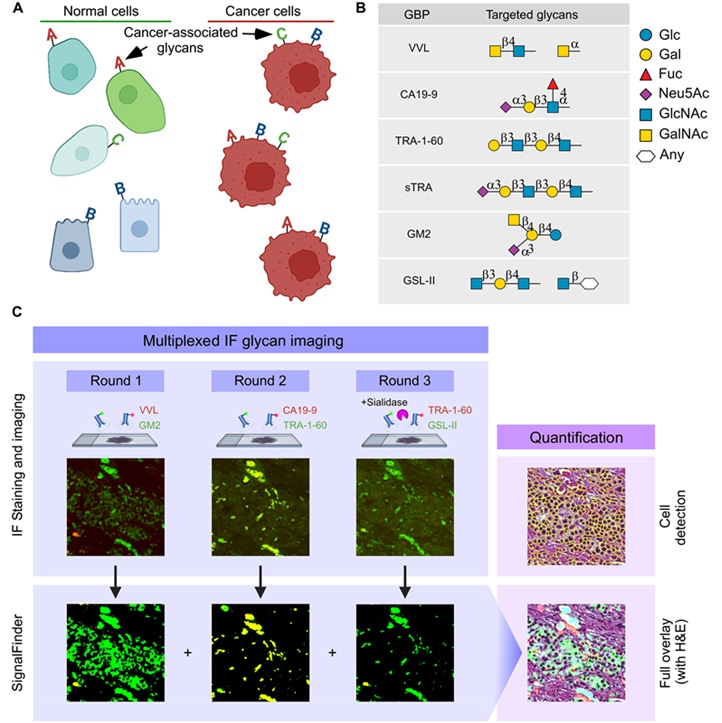
Novel Technique Uses ‘Sugar’ Signatures to Identify and Classify Pancreatic Cancer Cell Subtypes
Pancreatic cancer is often asymptomatic in its early stages, making it difficult to detect until it has progressed. Consequently, only 15% of pancreatic cancers are diagnosed early enough to allow for... Read moreTechnology
view channel
Disposable Microchip Technology Could Selectively Detect HIV in Whole Blood Samples
As of the end of 2023, approximately 40 million people globally were living with HIV, and around 630,000 individuals died from AIDS-related illnesses that same year. Despite a substantial decline in deaths... Read more
Pain-On-A-Chip Microfluidic Device Determines Types of Chronic Pain from Blood Samples
Chronic pain is a widespread condition that remains difficult to manage, and existing clinical methods for its treatment rely largely on self-reporting, which can be subjective and especially problematic... Read more
Innovative, Label-Free Ratiometric Fluorosensor Enables More Sensitive Viral RNA Detection
Viruses present a major global health risk, as demonstrated by recent pandemics, making early detection and identification essential for preventing new outbreaks. While traditional detection methods are... Read moreIndustry
view channel
Cepheid and Oxford Nanopore Technologies Partner on Advancing Automated Sequencing-Based Solutions
Cepheid (Sunnyvale, CA, USA), a leading molecular diagnostics company, and Oxford Nanopore Technologies (Oxford, UK), the company behind a new generation of sequencing-based molecular analysis technologies,... Read more
Grifols and Tecan’s IBL Collaborate on Advanced Biomarker Panels
Grifols (Barcelona, Spain), one of the world’s leading producers of plasma-derived medicines and innovative diagnostic solutions, is expanding its offer in clinical diagnostics through a strategic partnership... Read more




